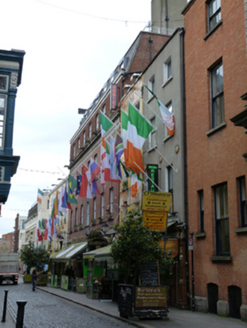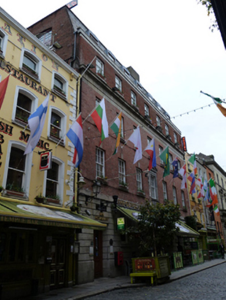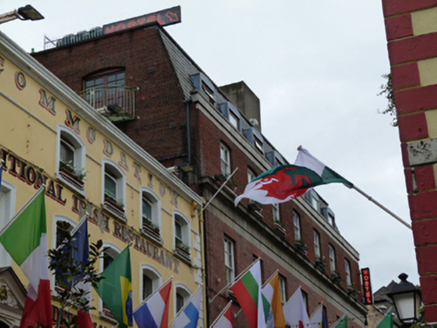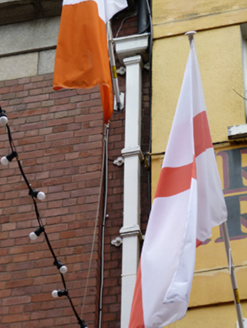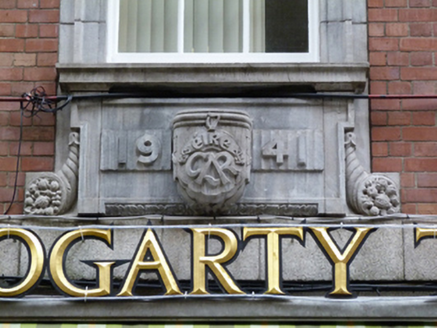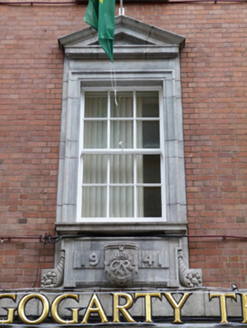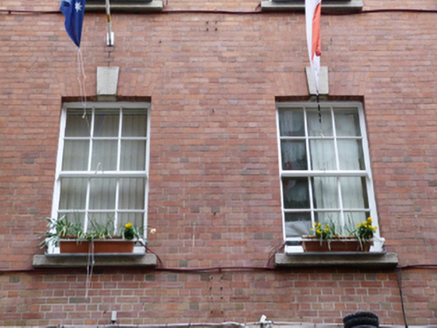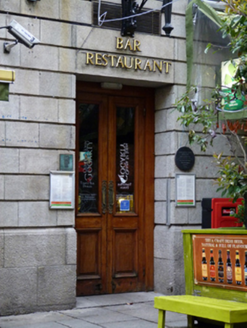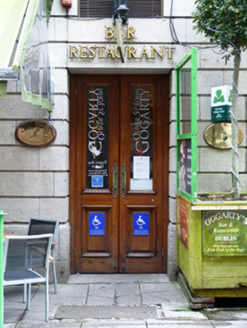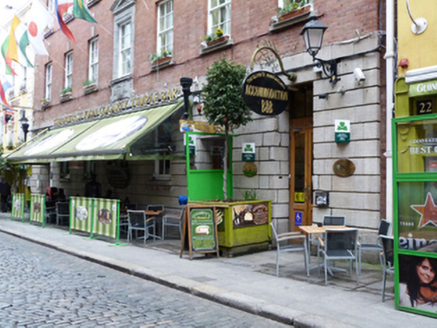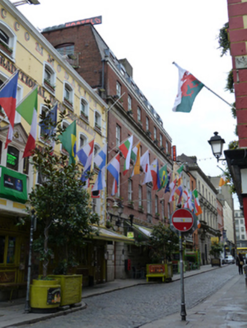Survey Data
Reg No
50020228
Rating
Regional
Categories of Special Interest
Architectural, Artistic, Social
Previous Name
The Central Bank
Original Use
Bank/financial institution
In Use As
Hotel
Date
1940 - 1945
Coordinates
315823, 234181
Date Recorded
14/04/2015
Date Updated
--/--/--
Description
Attached seven-bay three-storey former bank, built 1941, raised by two storeys c.1994. Now in use as hotel. Mansard attic storey addition set over ashlar granite entablature, profiled cast-iron rainwater goods. Red brick walls, laid in English bond, having carved granite platband over channelled granite to ground floor, with raised granite plinth course. Square-headed window openings with granite sills, granite keystones and six-over-six pane timber sliding sash windows, that to centre having carved limestone architrave, limestone frieze and pediment, carved limestone sill and apron having date plaque with coat of arms and insignia, flanked by cornucopia motifs. Square-headed door openings having double-leaf half-glazed timber panelled doors, that to south end with overlight and timber mullions. Situated to east side and north of Anglesea Street.
Appraisal
Anglesea Street was named after Lord Arthur Annesley, the first Earl of Anglesea. It was largely developed by the mid-eighteenth century and appears on John Rocque’s 1756 map of Dublin. Formerly the Central Bank, this building was designed by J. M. Fairweather of the Office of Public Works in 1941, and was subsequently replaced by the building on Dame Street. The building was raised by two storeys in 1994 and is now in use as an hotel and restaurant. The combination of red brick to the upper floors and rusticated granite to the ground floor provides textural variation to the façade, while the well-executed date plaque to the centre lends contextual interest to the composition. The use of Irish uncial script and a harp motif was often employed in the early decades after Independence to manifest a sense of national identity. The cornucopia motifs flanking the plaque are suggestive of the status and wealth of the institution.
